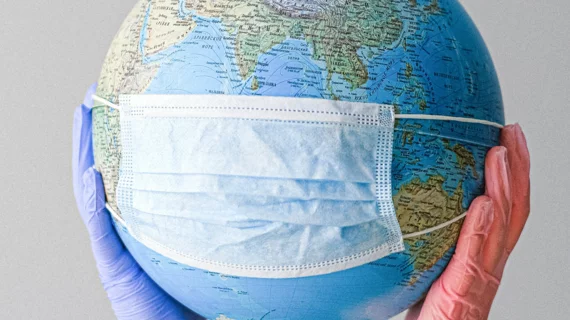Behind the scenes in COVID research labs, then and now
The past four years have witnessed major advancements in medical science’s drive to unravel the complexities of the human immune system. We have the COVID-19 pandemic to thank for much of the progress.
A good deal of the growth has come because the global health crisis hit and then hung around at a time when medical researchers were ready with sophisticated means of studying how and where the virus, SARS-CoV-2, struck and spread. And whom it sickened, killed or barely bothered.
More to the point, for the first time in history, medical scientists could doggedly pursue a pandemic in real time rather than retrospectively.
This week a senior journalist specialized in infectious diseases and global health examines several steps forward taken during the boom.
“Think about it,” writes the reporter, Helen Branswell of STAT. “At the start of 2020, the immune systems of nearly 8 billion people were effectively blank slates as pertains to this new coronavirus.”
Noting that the resulting “immunological homogeneity” set the stage for researchers to make “some amazing observations,” Branswell describes a number of these.
She also presents firsthand insights from researchers who dove into their lab-based detective work as soon as lockdown letups allowed it.
Among the immunology sleuths Branswell quotes in her coverage, which STAT published March 28 under the headline “Covid’s scientific silver lining: A chance to watch the human immune system respond in real time”:
- An HIV researcher at UCSF who “believes answers to questions that have plagued medicine for decades about so-called long conditions—lingering side effects of infections, like chronic Lyme disease or myalgic encephalomyelitis/chronic fatigue syndrome—will be found in the study of banked specimens from people who developed long COVID after an initial infection at the start of the pandemic.”
- An evolutionary biologist and professor of immunology and microbiology at Scripps Research who says we now have a “much, much, much, much better understanding of the sort of tight connection [that exists] between population immunity and viral evolution.”
- The chief of viroscience at Erasmus Medical Center in Rotterdam, Netherlands, who has come to believe “it makes sense biologically” that hybrid immunity—which develops in individuals who have been both infected and vaccinated—influences immunity’s durability.
Bringing the discussion to the present moment, Branswell informs: “The magic hour is over. There is no more homogeneity. … There is too much jotted on our immunological white boards; scientists can no longer clearly see the effect of a new viral prompt.”
On the other hand, the COVID researchers on the leading edge of the science have enough to work with for awhile, even if only retrospectively.
As the director of the Emory University Vaccine Center tells Branswell: “When you take the whole collection of the work that was done by many outstanding labs, I think it provided great insight. And insight that we had not had before.”
There’s quite a lot more, and Branswell shapes it into a rewarding story arc.

